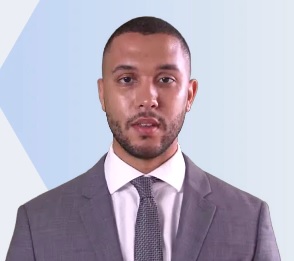Write an essay of 1,000-1,250 words regarding public goods. Include the following:
1. Explain what a public good is.
2. Discuss how a public good is different than a private good.
3. Discuss whether only government can supply a public good.
4. Describe the challenges related to public goods. Include how the “free rider” problems should be addressed.
A public good is a type of commodity that is non-excludable, meaning that individuals cannot be excluded from using or consuming the good, and non-rivalrous, meaning that one person's use or consumption of the good does not diminish its availability for others. Public goods are typically provided by the government or through collective action, as they benefit society as a whole and cannot be efficiently provided by the private sector.
In contrast, private goods are exclusive and rivalrous. Private goods are characterized by excludability, meaning that sellers can prevent others from using or consuming the good unless they pay for it, and rivalry, meaning that one person's use or consumption of the good diminishes its availability for others. Examples of private goods include food, clothing, and electronics, where individuals can purchase and consume them based on their personal preferences and budgets.
One of the main differences between public goods and private goods is that public goods are non-excludable. This means that it is difficult, if not impossible, to prevent someone from benefiting from a public good once it is provided. For example, national defense is a classic example of a public good. Once a country invests in its military and defense systems, it cannot selectively prevent certain individuals or regions from benefiting from the protection the military provides.
Another key difference is that public goods are non-rivalrous. This means that one person's use or consumption of a public good does not detract from its availability for others. For instance, the use of streetlights or public parks does not diminish their usefulness or enjoyment for others. In contrast, private goods are rivalrous, as the use or consumption of the good by one individual prevents others from using or consuming the same good.
While public goods are often provided or coordinated by the government, it is not necessarily true that only the government can supply public goods. Private entities and voluntary organizations can also contribute to the provision of public goods. For example, organizations like charities and NGOs can provide public goods such as education, healthcare, or disaster relief. Additionally, individuals can contribute to public goods through voluntary actions, such as donating to public parks or participating in community clean-up efforts.
However, the government often plays a crucial role in ensuring the provision of public goods due to its ability to collect taxes and its monopoly on the legitimate use of force. The government has the power to impose taxes and allocate resources for the provision of public goods that benefit the entire society. This is particularly important in cases where the market fails to provide public goods efficiently, either due to the free rider problem or the lack of a profit motive.
One of the challenges related to public goods is the free rider problem. The free rider problem arises when individuals can benefit from a public good without contributing to its provision. Since public goods are non-excludable, individuals have an incentive to free ride, meaning they can benefit from others' provision of the good without paying their fair share. This leads to under-provision of public goods, as people are motivated to let others bear the cost while they enjoy the benefits for free.
To address the free rider problem, various solutions can be implemented. One approach is through government intervention and taxation. By imposing taxes, the government can ensure that individuals contribute to the provision of public goods. The revenue collected can then be used to fund the production and maintenance of public goods. However, excessive taxation can lead to inefficiencies and disincentives for productive activities, so it is important to strike a balance.
Another solution is through the use of collective action and voluntary contributions. Individuals can voluntarily contribute to the provision of public goods through donations or participation in community efforts. This approach relies on individuals recognizing the benefits of public goods and the importance of their own contributions in order to ensure their continued provision.
Furthermore, technological advancements can also help address the free rider problem. Digital platforms and crowdfunding mechanisms have made it easier for individuals to contribute to the provision of public goods. This can include crowdfunding campaigns for community infrastructure projects or online platforms that allow individuals to make voluntary contributions to public goods they value.
In conclusion, a public good is a commodity that is non-excludable and non-rivalrous. It is different from a private good because it cannot be efficiently provided by the private sector due to its characteristics. While the government often plays a significant role in the provision of public goods, private entities and voluntary organizations can also contribute. The main challenge related to public goods is the free rider problem, which can be addressed through government intervention, taxation, collective action, and technological advancements. By recognizing the importance of public goods and implementing appropriate solutions, societies can ensure the provision and sustainability of these essential commodities.





